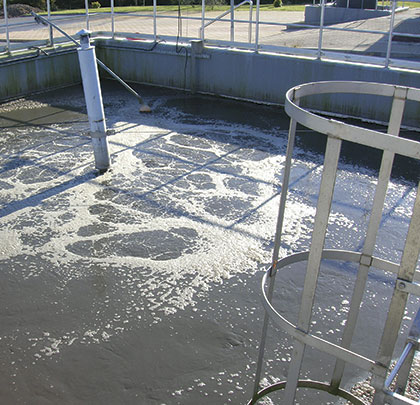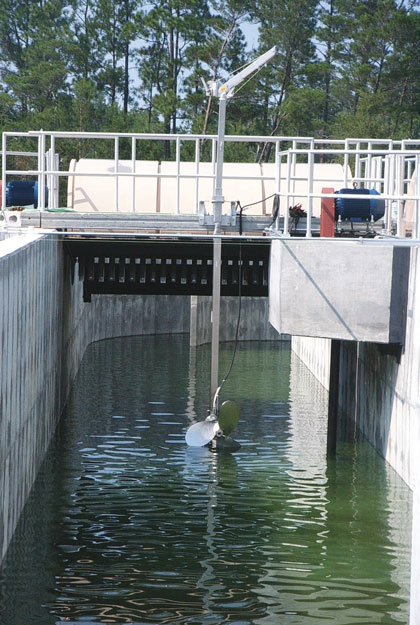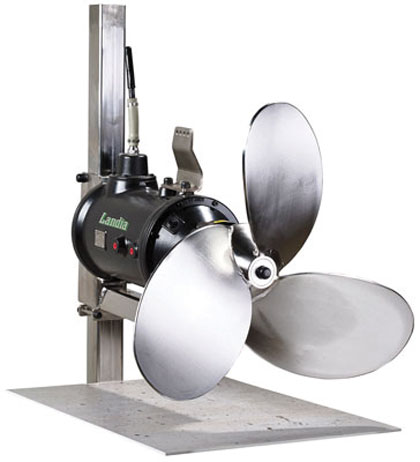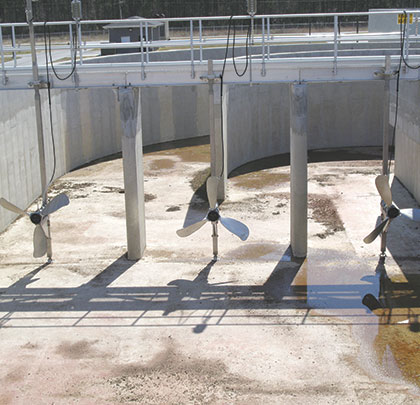Aeration accounts for a 50 to 70 percent of a treatment plant’s power consumption, and in part 1 of this series, we examined the potential benefits for a plant that can overcome the obstacles to efficiency. In this month’s conclusion, we’ll take a close look at how energy savings can be achieved with Cyclic Aerobic/Anoxic operation using Lakeside Magna Rotors during the aerobic phase and Lakeside Magna Rotors during the anoxic phase. This powerful partnership can reduce oxygen requirements by around 27 percent, which saves considerable power costs over the typical twenty-year life of the project.

THE HUNT FOR SAVINGS
Energy savings achieved with this Cyclic Aerobic/Anoxic operation using Lakeside Magna Rotors during the aerobic phase and Landia mixers during the anoxic phase will reduce oxygen requirements by around 27 percent. This saves considerable power costs over the typical twenty-year life of the project. Based on a 1 MGD plant, using the national average of 10.12 cents per kilowatt hour, this can reduce energy costs by approximately $18,000 per year.
For both oxidation ditches and plug-flow aeration basins, most treatment plants prefer to work with DO levels of activated sludge from 0.5 ppm, even up to 2 ppm. Vice President Warren Kersten agrees that anything above that, be it 3, 4, or 5 ppm is simply more aeration than required—and a waste of energy.
In addition to wasting energy, too much dissolved oxygen can cause an upset in anaerobic and/or anoxic selectors by having a high DO in the return activated sludge or mixed liquor recycle. It can also allow certain filamentous organisms to flourish that reduce the effectiveness of the final clarifiers due to a higher settled sludge volume and sludge volume index.
The DO level acts as a buffer, giving the bacteria just enough to work with, but there is really no logic in anything over 2ppm. Too much oxygen may inhibit the bacteria where nitrates are used for the O2 source, so you won’t achieve denitrification. This could mean having to add another carbon source, such as methanol, which further adds to costs and labor.

SUBSTANTIAL OFF-PEAK SAVINGS WITH SUBMERSIBLE MIXERS
On capital costs, adding one or two mixers should reduce the number of operating blowers. At the appropriate times, especially at night, switching off two 50 horsepower blowers for two 10 horsepower mixers creates savings that easily runs into tens or hundreds of thousands of dollars—and much better mixing is achieved. To bring about the best possible conditions for the process, you must have enough liquid velocity to adequately mix the reactor biomass. Initially, mixers mean more capital costs, but energy savings make the return on investment (ROI) very short indeed.
If you’ve decided to address those perhaps unnecessarily high energy costs and enhance your plant’s activated sludge process with a mixer, then Landia’s advice is to look for a low speed mixer with a stainless steel propeller.

“With low speed, a mixer will gently mix the sludge without causing floc shear, whereas the shearing by a high speed mixer will disrupt and damage the process,” Kersten says.
“Also, the initial capital cost of a mixer with a stainless steel propeller shouldn’t be a deterrent because it has such a long lifetime. Recently we’ve been replacing motors that have come to the end of their natural life, but can still use the propellers after twenty or so years in an oxidation ditch because there’s absolutely nothing wrong with them. So when a plant undergoes an upgrade, reusing our mixers’ original propellers represents a big reduction in capital costs for customers. Together with energy savings from using much less horse power, we can help treatment plants on their way to becoming far more sustainable and ultimately, energy-neutral.” ◆
About the Author:
Soren Rasmussen is the director of Landia, Inc. For more information about Landia’s range of applications, call 919.466.0603, email info@landiainc.com, or visit www.landiainc.com.
____________________________________________
MODERN PUMPING TODAY, January 2017
Did you enjoy this article?
Subscribe to the FREE Digital Edition of Modern Pumping Today Magazine!
![]()


